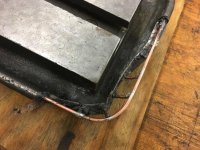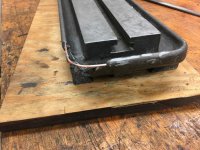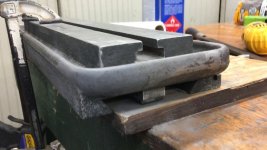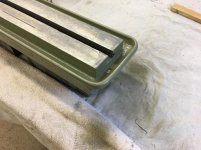RCPDesigns
Hot Rolled
- Joined
- Sep 3, 2014
- Location
- Atlanta GA.
I recently came across a Craigslist ad for a horizontal mill that was priced right and had a small footprint. I posted about it here in the forum and was able to get some good information on it. The original thought was that it was a US Machine Tool #1 Horizontal Mill. The rational for that guess was a good one... the picture I provide was darn near identical. Once I went to buy the mill it turned out to be a Bristol No 0 Miller made by C.G. Garrigus Machine Co. of Bristol Connecticut. I haven't been able to find another instance of this mill though I did find a post here in the forum about a #2 horizontal mill.
http://www.practicalmachinist.com/v...story/intro-looking-bristol-mill-info-276179/
It seems this company was around from about 1907 up to 1917 when it was bought by the Wallace Barnes Company to make machine gun springs. It also appears that the machine tool division was spawned off and created a new company, The Bristol Machine Tool Company. As such it appears my mill was made between 1907 and 1917.
Here are a few pictures when I picked it up and two from when I got it back to the shop.
http://www.practicalmachinist.com/v...story/intro-looking-bristol-mill-info-276179/
It seems this company was around from about 1907 up to 1917 when it was bought by the Wallace Barnes Company to make machine gun springs. It also appears that the machine tool division was spawned off and created a new company, The Bristol Machine Tool Company. As such it appears my mill was made between 1907 and 1917.
Here are a few pictures when I picked it up and two from when I got it back to the shop.

















 Oh.. and the pinion goes in the middle and rotates about the OD of the main bearing. The far end of the spindle has the rest of the keyway for a pulley and is threaded as well.
Oh.. and the pinion goes in the middle and rotates about the OD of the main bearing. The far end of the spindle has the rest of the keyway for a pulley and is threaded as well. 
